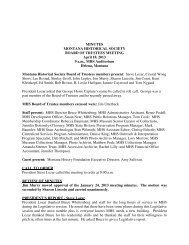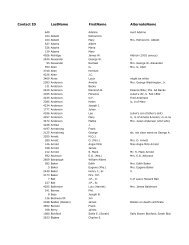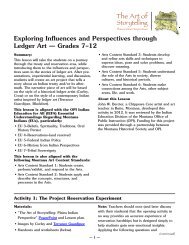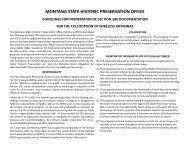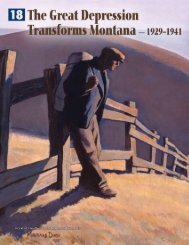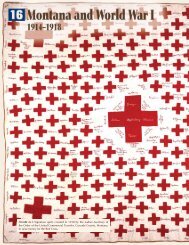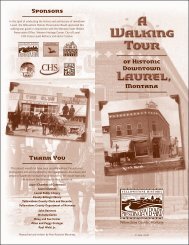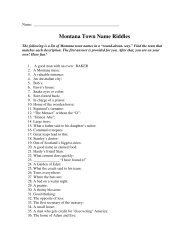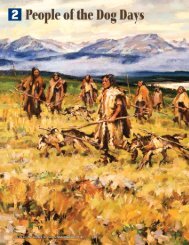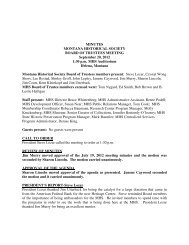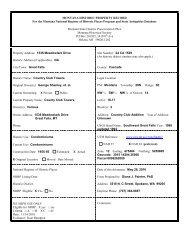Chapter 11 - Montana Historical Society
Chapter 11 - Montana Historical Society
Chapter 11 - Montana Historical Society
You also want an ePaper? Increase the reach of your titles
YUMPU automatically turns print PDFs into web optimized ePapers that Google loves.
FIGURE <strong>11</strong>.18: Crow Indian policemen<br />
were paid $6 ($140 today) for each<br />
child they delivered to school. A Crow<br />
boy attending Carlisle Indian Industrial<br />
School in Pennsylvania drew this picture<br />
of reservation agent Major Wyman<br />
and a tribal policeman collecting a<br />
little Crow girl from her mother.<br />
The Results of Allotment<br />
2 2 2 P A R T 2 : A C E N T U R Y O F T R A N S F O R M A T I O N<br />
Think about what it would be like if someone came into your home,<br />
confi ned you to the room you happened to be standing in, and sold the<br />
rest of the house because you were not using it. For many Indian people,<br />
this is what allotment was like.<br />
Together <strong>Montana</strong>’s reservations lost more than 400,000 acres of<br />
land—in some cases the only farmable land on the reservation—to non-<br />
Indian ownership. Before allotments, tribal members on the Flathead<br />
Reservation were about as well-off as non-Indian farmers. But losing<br />
access to farmland, grazing land, and other important resources drove<br />
many of them into poverty.<br />
On the Blackfeet, Crow, and Flathead Reservations, the government<br />
had urged tribes to spend large amounts of money to build irrigation<br />
projects. But those irrigation projects ended up mostly helping the non-<br />
Indian farmers who moved onto the reservations—not the Indians who<br />
paid for the improvements.<br />
Allotments also changed how land was used on reservations. It forced<br />
some tribal members to sell off large horse and cattle herds that could no<br />
longer graze on communal (shared by all members of a community)<br />
reservation lands. Where it was too dry to farm, Indian landowners often<br />
sold their allotments just to pay their taxes or buy food. The Blackfeet, for<br />
example, lost 200,000 acres between 1912 and 1929. Most of the land went<br />
to local businesses to pay debts for items purchased at their stores.<br />
In the 47 years that allotments were in effect, tribes across the West<br />
lost 70 percent of their remaining lands. Years later John Collier, the<br />
U.S. commissioner of Indian affairs,<br />
wrote that allotments had caused<br />
“poverty bordering on starvation<br />
in many areas, a 30 percent illiteracy<br />
rate (percentage of people<br />
who cannot read), a death rate<br />
twice that of the white population,<br />
and the loss of more than 90 million<br />
acres of Indian land.”<br />
Losing Our Selves:<br />
The Boarding School<br />
Experience<br />
Imagine being rounded up by foreigners,<br />
taken from your parents,<br />
and sent to a strange institution far<br />
away from home. Your clothes are<br />
burned. Your hair is cut off—something<br />
that usually happens when



